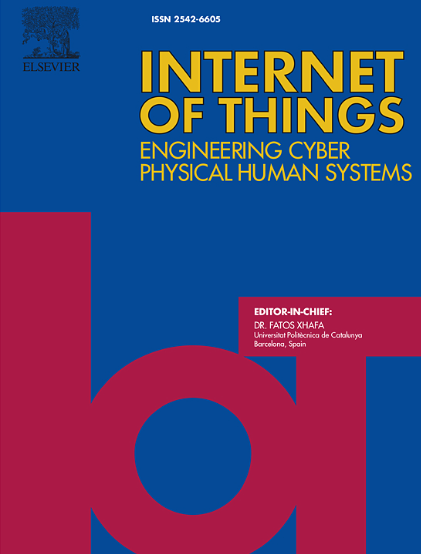6G Internet-of-Things assisted smart homes and buildings: Enabling technologies, opportunities and challenges
IF 6
3区 计算机科学
Q1 COMPUTER SCIENCE, INFORMATION SYSTEMS
引用次数: 0
Abstract
Smart homes (SHs) and smart buildings (SBs) play a crucial role in addressing global urbanization and are key elements of smart cities (SCs). They utilize integrated systems to process large volumes of data, enabling intelligent responses and improved quality of life. However, the growing number of connected devices and increasing data demands have exceeded the capabilities of existing network technologies, reducing service effectiveness. This article provides a comprehensive survey of emerging technologies, especially those underexplored in SH and SB contexts. It highlights the potential of sixth-generation (6G) wireless networks and the Internet of Things (IoT) to transform smart indoor environments through greater automation, intelligence, and adaptability. The authors first analyze the limitations of current IoT-based systems and then examine advanced 6G technologies, including integrated sensing and communication (ISAC), machine learning (ML), visible light communication (VLC), reconfigurable intelligent surfaces (RIS), and blockchain (BC). These technologies aim to resolve issues related to scalability, connectivity, and interoperability that challenge current IoT/5G models. Unlike previous studies focusing on narrow areas such as energy or security, this survey takes a holistic approach. It aligns 6G capabilities with SH/SB needs like human-device interaction, energy efficiency, and robust security, and introduces new applications such as AI-driven digital twins and edge intelligence. The article also identifies research gaps, including resource allocation in diverse networks and ethical AI deployment. It offers guidance for future research and urges collaboration, standardization, and human-centric design to enable next-generation intelligent living environments.
6G物联网辅助智能家居和智能建筑:使能技术、机遇和挑战
智能家居(SHs)和智能建筑(SBs)在解决全球城市化问题方面发挥着至关重要的作用,是智能城市(SCs)的关键要素。他们利用集成系统处理大量数据,实现智能响应,提高生活质量。然而,随着连接设备数量的不断增加和数据需求的不断增长,现有网络技术的能力已经无法承受,从而降低了业务的有效性。本文提供了对新兴技术的全面调查,特别是那些在SH和SB环境中未被充分探索的技术。它强调了第六代(6G)无线网络和物联网(IoT)的潜力,通过更高的自动化、智能和适应性来改变智能室内环境。作者首先分析了当前基于物联网的系统的局限性,然后研究了先进的6G技术,包括集成传感和通信(ISAC)、机器学习(ML)、可见光通信(VLC)、可重构智能表面(RIS)和区块链(BC)。这些技术旨在解决与可扩展性、连接性和互操作性相关的问题,这些问题挑战了当前的IoT/5G模型。与以往的研究专注于能源或安全等狭窄领域不同,此次调查采取了整体方法。它将6G功能与人机交互、能源效率和强大的安全性等SH/SB需求相结合,并引入了人工智能驱动的数字孪生和边缘智能等新应用。文章还指出了研究差距,包括不同网络中的资源分配和道德人工智能部署。它为未来的研究提供了指导,并敦促协作、标准化和以人为本的设计,以实现下一代智能生活环境。
本文章由计算机程序翻译,如有差异,请以英文原文为准。
求助全文
约1分钟内获得全文
求助全文
来源期刊

Internet of Things
Multiple-
CiteScore
3.60
自引率
5.10%
发文量
115
审稿时长
37 days
期刊介绍:
Internet of Things; Engineering Cyber Physical Human Systems is a comprehensive journal encouraging cross collaboration between researchers, engineers and practitioners in the field of IoT & Cyber Physical Human Systems. The journal offers a unique platform to exchange scientific information on the entire breadth of technology, science, and societal applications of the IoT.
The journal will place a high priority on timely publication, and provide a home for high quality.
Furthermore, IOT is interested in publishing topical Special Issues on any aspect of IOT.
 求助内容:
求助内容: 应助结果提醒方式:
应助结果提醒方式:


